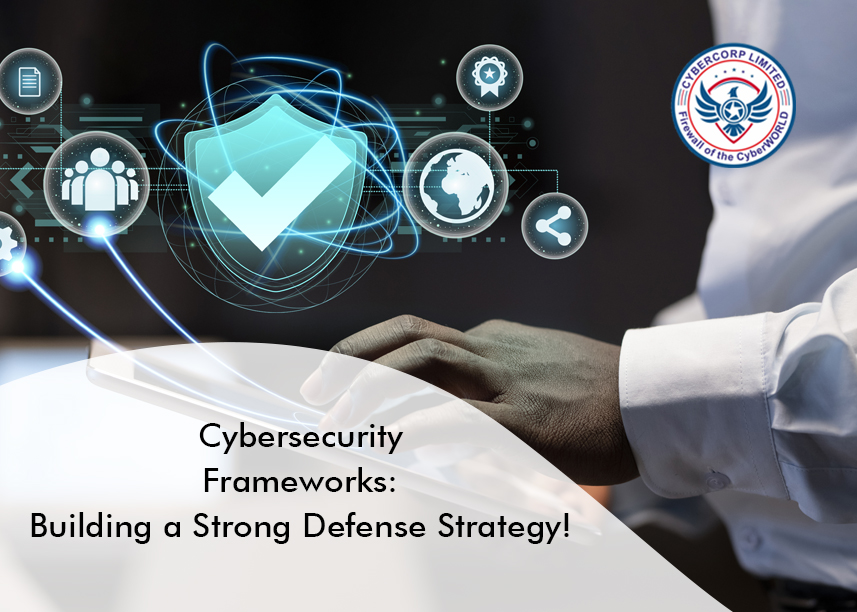
Exploring the Various Types of Cybersecurity: Safeguarding Your Digital World

In today's digital world, cybersecurity is more critical than ever. With threats evolving rapidly, understanding the different types of cybersecurity can help you better protect your personal and professional information. In this article, I'll walk you through the various types of cybersecurity and how they can keep you safe.
1. Network Security
Network security focuses on protecting the integrity and usability of networks and data. It involves measures to defend against unauthorized access, misuse, malfunction, or modification.
Example: Imagine a company with a secure network that uses firewalls and intrusion detection systems. These tools monitor incoming and outgoing traffic, blocking any suspicious activities that might indicate a potential threat. A real-world example of network security in action is the way companies like Cisco offer solutions to monitor and protect network traffic.
2. Information Security
Information security is all about protecting the confidentiality, integrity, and availability of data. This includes safeguarding personal, financial, and organizational data from unauthorized access and breaches.
Case Study: In 2017, Equifax, a major credit reporting agency, suffered a significant data breach that exposed sensitive information of millions. The breach highlighted the importance of information security measures like encryption and data masking, which can prevent unauthorized access to sensitive data.
3. Application Security
Application security involves measures to prevent security vulnerabilities within software applications. This type of cybersecurity focuses on identifying and fixing potential security flaws in software before they can be exploited.
Example: Many companies use secure coding practices and conduct regular security assessments to ensure their applications are safe. For instance, web developers might use tools like static application security testing (SAST) to identify vulnerabilities in the code before deploying an application.
4. Operational Security
Operational security (OpSec) involves managing and protecting an organization's processes and procedures to ensure that sensitive information remains confidential. This includes monitoring user behavior and securing operational procedures.
Case Study: A healthcare provider might implement strict OpSec measures to protect patient data. By regularly reviewing access controls and ensuring that only authorized personnel can access certain information, they can prevent data breaches and unauthorized disclosures.
5. Cloud Security
Cloud security focuses on protecting data and applications stored in cloud environments. As more businesses move to the cloud, securing these platforms is crucial to prevent data breaches and ensure compliance with regulations.
Example: Companies like Amazon Web Services (AWS) and Microsoft Azure offer various cloud security tools and services. These include encryption, identity and access management, and regular security updates to protect data stored in the cloud.
6. Endpoint Security
Endpoint security involves protecting individual devices, such as computers, smartphones, and tablets, from cyber threats. This type of security ensures that each device accessing a network is secure and free from malware.
Example: Antivirus software and endpoint detection and response (EDR) tools are commonly used to protect devices from malware and other threats. For instance, Norton and McAfee offer comprehensive solutions to scan for and remove malware from individual devices.
7. Disaster Recovery and Business Continuity
Disaster recovery focuses on the strategies and processes to recover data and restore operations after a cybersecurity incident or natural disaster. Business continuity ensures that essential business functions continue during and after a crisis.
Case Study: After a ransomware attack that locked crucial data, a company with a robust disaster recovery plan was able to quickly restore operations and minimize downtime. They had regular backups and a clear plan for data recovery, which helped them recover swiftly from the attack.
Conclusion
Understanding the different types of cybersecurity is essential for safeguarding your digital life and business. Whether it's protecting your network, securing your data, or ensuring your applications are safe, each type of cybersecurity plays a crucial role in maintaining a secure digital environment. By staying informed and implementing these security measures, you can better protect yourself and your organization from the ever-evolving landscape of cyber threats.
Frequently Asked Questions (FAQs) About Cybersecurity
1. What is cybersecurity?
Cybersecurity is the practice of protecting systems, networks, and data from digital attacks, theft, and damage. It involves implementing various technologies, processes, and practices to safeguard information from unauthorized access and cyber threats.
2. Why is cybersecurity important?
Cybersecurity is crucial because it protects sensitive information and systems from cyber threats such as hacking, data breaches, and malware. It helps ensure the confidentiality, integrity, and availability of data, which is essential for maintaining trust and operational efficiency in personal and professional settings.
3. What are the different types of cybersecurity?
The main types of cybersecurity include:
- Network Security: Protects the integrity and usability of networks.
- Information Security: Safeguards the confidentiality and integrity of data.
- Application Security: Focuses on identifying and fixing vulnerabilities in software.
- Operational Security: Manages and protects processes and procedures.
- Cloud Security: Secures data and applications in cloud environments.
- Endpoint Security: Protects individual devices from threats.
- Disaster Recovery and Business Continuity: Ensures recovery and continuity after a cyber incident or disaster.
4. What is the difference between network security and information security?
Network Security is concerned with protecting the entire network infrastructure from threats, including unauthorized access and attacks. Information Security, on the other hand, focuses specifically on protecting data and information from unauthorized access, alteration, or destruction, regardless of where it is stored or transmitted.
5. How can I protect my personal devices from cyber threats?
To protect your personal devices:
- Install and regularly update antivirus software.
- Use strong, unique passwords for each account and enable two-factor authentication.
- Keep your operating system and applications up to date with the latest security patches.
- Be cautious of suspicious emails, links, and downloads.
- Regularly back up important data.
6. What should a disaster recovery plan include?
A disaster recovery plan should include:
- Risk Assessment: Identify potential threats and their impact.
- Backup Procedures: Regularly back up data and ensure it is accessible.
- Recovery Strategies: Outline steps to restore systems and data after an incident.
- Communication Plan: Establish how to communicate with stakeholders during a crisis.
- Testing and Training: Regularly test the plan and train staff on their roles and responsibilities.
7. What is the role of cloud security?
Cloud Security ensures that data and applications hosted in cloud environments are protected from unauthorized access, breaches, and other threats. It involves using tools and practices such as encryption, access controls, and security monitoring to safeguard cloud-based resources.
8. How often should I update my cybersecurity measures?
Cybersecurity measures should be updated regularly. This includes applying security patches, reviewing and updating security policies, and conducting regular security assessments. Staying informed about new threats and emerging technologies is also crucial to maintaining effective protection.
9. What are some common cybersecurity threats?
Common cybersecurity threats include:
- Malware: Malicious software designed to harm systems or steal data.
- Phishing: Fraudulent attempts to obtain sensitive information through deceptive emails or messages.
- Ransomware: Malware that encrypts data and demands a ransom for its release.
- DDoS Attacks: Distributed denial-of-service attacks that overwhelm systems with traffic to cause outages.
- Man-in-the-Middle Attacks: Interceptions of communications between parties to steal information.
10. How can businesses ensure their cybersecurity is effective?
Businesses can ensure effective cybersecurity by:
- Implementing a comprehensive security strategy that includes network, application, and information security.
- Conducting regular security audits and vulnerability assessments.
- Training employees on cybersecurity best practices and awareness.
- Keeping software and systems updated with the latest security patches.
- Developing and testing disaster recovery and business continuity plans.
Categories
Trending Posts
-
Security Update
Supply Chain Cybersecurity: How to Secure Your Extended Network -
Security Update
A Guide to Endpoint Security: What You Need to Know -
Security Update
Top 10 Tools Every Cyber Security Professional Should Know -
Security Update
Exploring the Role of Ethical Hackers in Cyber Security -
Security Update
10 Practical Cyber Security Tips Everyone Should Know
Why CyberCorp is not a mere SPAC?

We are

CoOperative Corporate
Creates a commonwealth among the partners
Cumulative Growth safeguards against losses to one entity
We believe in

Organic Growth
Promotes growth within the group companies
Ensures Maximum benefits
We do

Integration
Horizontal integration of the various products
Creating new and more effective scalable solutions
© 2022-2024 CyberCorp Limited. All Rights Reserved.









